The formwork of a building is carried out after the excavation work before the concrete is poured. The purpose of the formwork is to keep the concrete in place until it is dry and not mixed with the ground. Concrete formwork is an important step in the construction of a building or the renovation of foundations. The intervention of experienced professionals is essential to the quality of the structure.
VOPAA your foundation expert gives you some explanations.
The principle of the formwork technique
As we have already said in the article on concrete foundations, the flooring is now built of poured concrete or formwork. The formwork is a mould that allows the concrete to be poured in a controlled manner to give it a well-defined shape. The formwork will be removed once the concrete is dry.
Formwork is an essential phase when pouring concrete. The professional chester usually uses wooden panels to make a formwork. The important thing is to protect the concrete from impurities, pebbles and soil so that it is as pure as possible. Thanks to the formwork, the concrete spreads evenly.
How do I get the solidity of the concrete ?
Once the concrete is poured, the chester sometimes uses a concrete vibrator. This results in quality concrete by improving the distribution of the filling. Reinforcement can be improved by adding scrap to obtain reinforced concrete. To ensure that the concrete is solid, it must be allowed to ripen for a number of days, which varies depending on the type of concrete.
Different types of foundation formwork
The professional will take into account different criteria before making the formwork, including the desired shape, the type of construction, etc. Examples of formwork types include:
- The wooden formwork
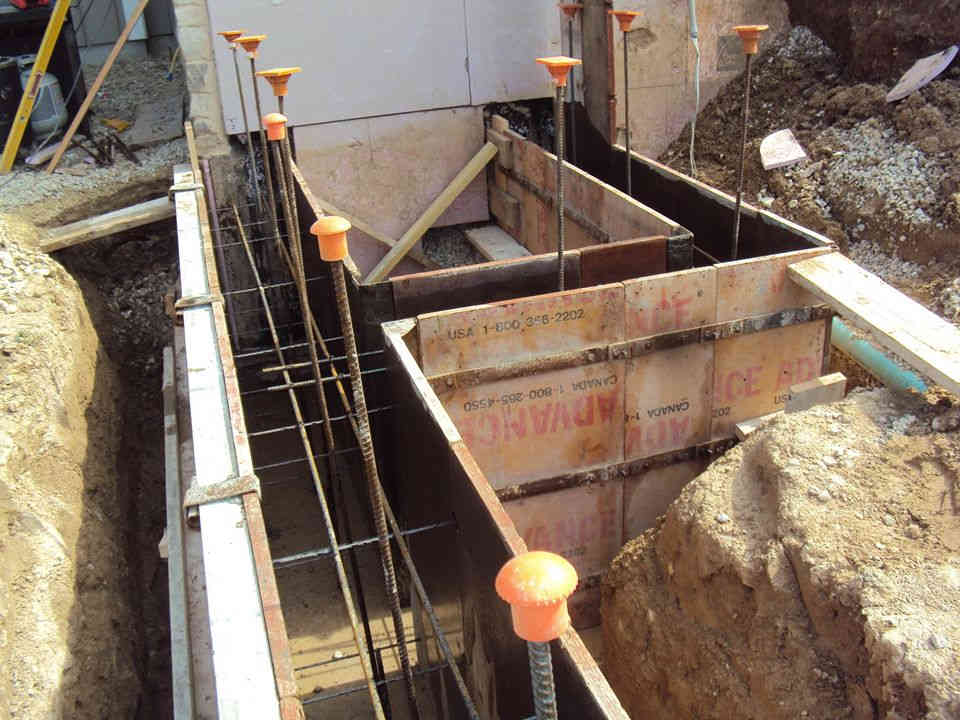
This type of formwork consists of planks/wooden slabs assembled according to the technical constraints of construction. The material, pine or plywood, must be strong, thick to withstand the push of concrete and benefit from sharp edges.
- Insulating formwork
The insulating formwork can be used in small and large construction sites. It is a formwork made of insulating panels. These panels have two roles, either to serve as molds for concrete and to insulate the foundation. Once the concrete has taken, the professional will be able to leave the formwork in place as it will be used as thermal insulation.
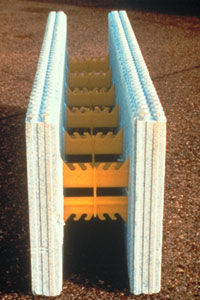
For a free and detailed submission,contact our team of foundation experts in Gatineau
And Montreal
PHONES :
Ottawa Region 1 819 962-6981
Montreal Area 1,514-269-0249
The work of de-cluttering
The de-cutting operation is delicate because the concrete, once dry, is still fragile, especially on the edges and corners. It can deform and crack. In order not to weaken the concrete, the expert will meticulously remove the poles and the holding pegs one after the other.
Then he will tap with a hammer to uncouple the concrete formwork. It is possible to make a cure to protect the concrete from cold or heat while it is walling. Usually, the de-cluttering should be done 7 days after the pouring and the concrete will reach its maximum MPA after 28 days.
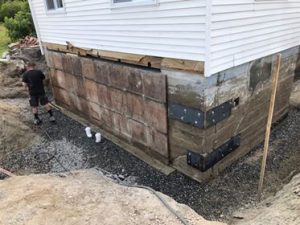
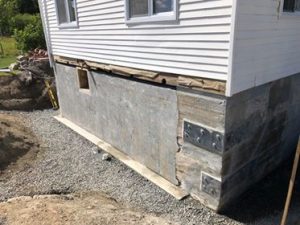
Foundation in concrete blocks or concrete
The quality of the foundation, also called solage,is a crucial element for the construction that guarantees the solidity of the structure of the building. For foundations, it is possible to choose between two types of construction: the concrete foundation and the concrete block foundation.
- The concrete technique
This is the most common solution. This technique is resistant over time and offers good waterproofing. The principle is to pour concrete into a formwork.
- The technique of foundation concrete blocks
The masonry elements are bound by mortar joints. The inside of the concrete blocks is empty to bring in air. This combination of air-filled concrete blocks acts as a natural thermal insulator. On the other hand, this type of construction requires good drainage of the bases. The installation of a French drain to avoid moisture stagnation is essential.
In Quebec, the concrete solution is recommended for the foundations of buildings. Indeed, this type of formwork is not sensitive to frost and temperature variations that can be very important in Quebec region.
Regardless of the type of foundation,cracks may appear on the walls or cracks on the front of the house. In this case, the intervention of a professional team is essential to diagnose the origin of the problem. The expert moves and determines the causes of the cracks. After careful analysis, he will be able to offer you a suitable solution to repair cracks in the walls and foundations in a sustainable way.
Our team intervenes on a renovation as well as on a new construction. Don’t hesitate to contact our experts in Gatineau and Montreal to benefit from all our expertise and advice. We make a free and complete submission so you can make an informed decision without haste.
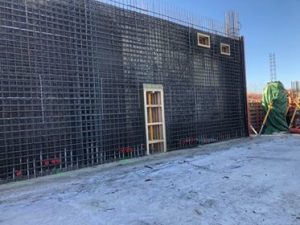
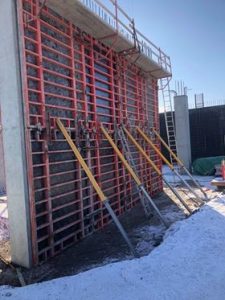
Read in the portfolio of our construction sites
The maintenance of a concrete slab in Buckingham, Gatineau
